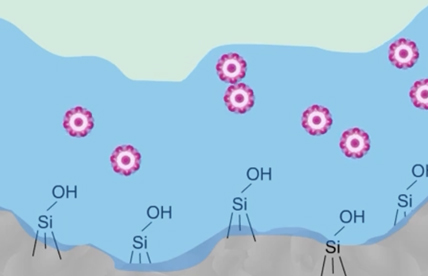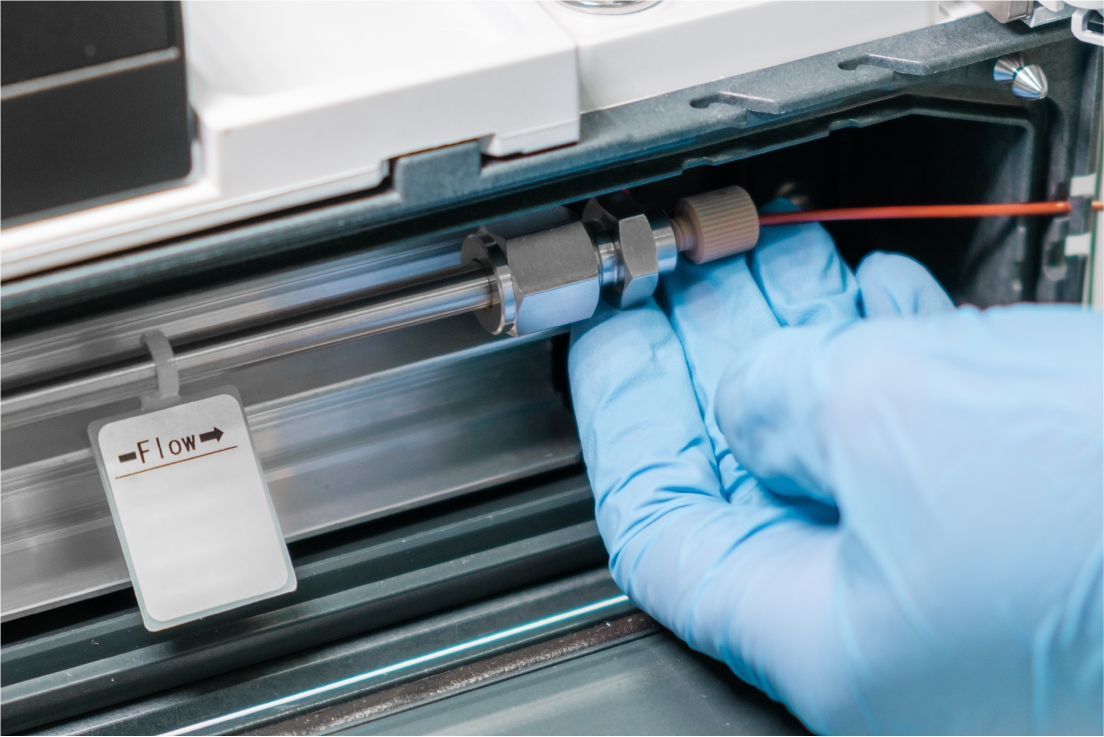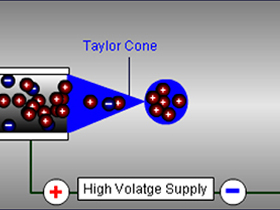Introduction: Analytical Solutions for Emerging PFAS Challenges
Per- and polyfluoroalkyl substances (PFAS) are a large and diverse group of synthetic chemicals that have been used for decades in a wide range of consumer and industrial products, valued for their resistance to heat, water, and oil. Growing awareness of their persistence in the environment and potential health risks has led to increased regulatory scrutiny, particularly of long-chain PFAS (≥C8). This has prompted a transition toward shorter-chain alternatives, including ultra-short chain PFAS (≤C3) such as trifluoroacetic acid (TFA) and perfluoropropionic acid (PFPrA), which are now being used more frequently as replacements.
However, these ultra-short chain compounds are extremely mobile in the environment and equally persistent, raising new concerns. They present unique analytical challenges due to their high polarity and tendency to elute near the void volume of conventional reversed phase columns. This can compromise detection and quantification, particularly in complex environmental samples. To address these limitations, this article evaluates four different LC column chemistries – InertSustain AQ-C18, InertSustain AX-C18, Shodex HILICpak VT-50 2D, and HALO® PCS Phenyl-Hexyl – each offering enhanced performance for the retention and separation of ultra-short chain PFAS in LC-MS workflows.
Polar-Optimised Reversed Phase Retention: InertSustain AQ-C18
The InertSustain AQ-C18 column from GL Sciences is a reversed phase column specifically designed to improve the retention of highly polar analytes. It utilises a proprietary C18 bonding technology with evenly distributed alkyl chains and hydrophilic endcapping, enabling stable operation under high aqueous conditions. This makes it particularly effective for polar compounds that are typically difficult to retain using standard reversed phase columns.
For ultra-short chain PFAS analysis, the InertSustain AQ-C18 provides strong retention and clear separation of low-chain analytes as shown in Figure 1. Its optimised stationary phase minimises early elution and matrix interference, improving peak shape and quantification accuracy. This makes it an ideal choice for laboratories looking to enhance existing reversed phase LC-MS methods without major redevelopment.


Figure 1: Analysis of trifluoroacetic acid (1), difluoroacetic acid (2), perfluorobutanoic acid (3), perfluoropentanoic acid (4), and perfluorohexanoic acid (5) using InertSustain AQ-C18 [1]
Method Conditions
| Column | InertSustain AQ-C18, 3 µm, 150 x 2.1 mm Metal-free hardware |
| Delay Column | Delay column for PFAS 3 x 30 mm |
| Mobile Phase A | 10 mM ammonium acetate and 0.1% acetic acid in water |
| Mobile Phase B | Acetonitrile |
| Gradient | 5 – 98% B (0 – 6 minutes) |
| Flow Rate | 0.2 ml/min |
| Temperature | 40°C |
| Detection | MS/MS (ESI, Negative) |
Enhanced Retention of Ultra-Short Chain PFAS with Mixed-Mode LC: InertSustain AX-C18
The InertSustain AX-C18 column from GL Sciences is a mixed-mode column that combines C18 bonding with embedded tertiary amine groups, enabling both hydrophobic and anion-exchange retention. This dual-mode design facilitates simultaneous interaction with the hydrophobic fluorinated chains and negatively charged head groups of PFAS molecules, enhancing selectivity and improving retention efficiency.
For ultra-short chain PFAS such as TFA and DFA, the AX-C18 delivers excellent retention and resolution (Figure 2), effectively reducing early elution and minimising matrix interference, while remaining fully compatible with LC/MS buffer systems. The simultaneous analysis of both short- and long-chain PFAS can be achieved through optimisation of organic solvent and pH gradients making the InertSustain AX-C18 an adaptable solution for comprehensive PFAS profiling.


Figure 2: Analysis of trifluoroacetic acid (peak 1) and difluoroacetic acid (peak 2) using InertSustainAX-C18 [2]
Method Conditions
| Column | InertSustain AX-C18, 3 µm, 150 x 2.1 mm Metal-free hardware |
| Delay Column | Delay column for PFAS 3 x 30mm |
| Mobile Phase A | 10 mM ammonium acetate and 0.1% acetic acid in water |
| Mobile Phase B | Acetonitrile |
| Gradient | 20 – 98% B (0 – 5 minutes), 98% B (5 – 8 minutes) |
| Flow Rate | 0.2 ml/min |
| Temperature | 40°C |
| Detection | MS/MS (ESI, Negative) |
HILIC-Based Selectivity for High-Sensitivity PFAS Detection: Shodex HILICpak VT-50 2D
The Shodex HILICpak VT-50 2D is a polymer-based column designed for the separation of highly polar and anionic compounds. Operating in Hydrophilic Interaction Liquid Chromatography (HILIC) mode, it features a quaternary ammonium-functionalised packing material that combines HILIC with weak anion-exchange properties – optimising retention under high-acetonitrile conditions, ideal for LC-MS applications.
For ultra-short chain PFAS, the VT-50 2D provides reliable retention where reversed phase methods typically underperform. As demonstrated in Figure 3, it achieves clear separation of both short- and long-chain PFAS using an optimised mobile phase of 50 mM ammonium acetate/acetonitrile (30:70). This method offers a balance of strong retention and high ionisation efficiency, making the VT-50 2D a robust solution for laboratories performing high-sensitivity analysis of polar PFAS across a wide chain-length range.


Figure 3: Separation of short-chain PFAS, PFOS and PFOA using Shodex HILICpak VT-50 2D [3]
Method Conditions
| Column | Shodex HILICpak VT-50 2D, 5 µm, 150 x 2 mm, PEEK Hardware |
| Mobile Phase | 50 mM ammonium acetate / acetonitrile, 30/70, isocratic |
| Flow Rate | 0.2 ml/min |
| Temperature | 40°C |
| Detection | ESI-MS (negative, SIM), PDA |
Positively Charged Reversed-Phase for Improved Peak Shape and Selectivity: HALO® PCS Phenyl-Hexyl
The HALO® PCS Phenyl-Hexyl column from Advanced Materials Technology features Fused-Core® particle technology combined with a positively charged surface chemistry. The 2.7 µm superficially porous particle provides high separation efficiency at low backpressures. The charged surface phenyl-hexyl stationary phase offers distinct selectivity, making it well-suited to complex mixtures often encountered in PFAS analysis.
When applied to ultra-short chain PFAS, the HALO® PCS Phenyl-Hexyl delivers fast, high-resolution separations with strong retention across a wide range of PFAS chain lengths. The column performs exceptionally under low ionic strength mobile phases, offering reduced ion suppression and enhanced compatibility with LC-MS/MS detection. It supports simultaneous analysis of short and long chain PFAS within a single, optimised method – making it a compelling option for laboratories that prioritise speed, efficiency, and analytical performance in demanding PFAS workflows.


Figure 4: Analysis of Ultra-short and Long Chain PFAS using a HALO® PCS Phenyl-Hexyl Column. Peak identities: TFA (1), PFMtS (2), PFPrA (3), PFEtS (4), PFBA (5), PFPrS (6), PFPeA (7), PFBS (8), PFHxA (9), PFHpA (10), PFHxS (11), PFOA (12), PFNA (13), PFOS (14), PFDA (15), PFUnA (16), PFDS (17), PFDoA (18), PFTriA (19), PFTreA (20), PFHxDA (21), and PFODA (22). [4]
Method Conditions
| Column | HALO® 90 Å PCS Phenyl-Hexyl, 2.7 μm, 2.1 x 100 mm |
| Delay Column | HALO® 160 Å PFAS Delay, 2.7 μm, 3.0 x 50 mm |
| Mobile Phase A | 5mM Ammonium Formate, 0.05% Formic Acid |
| Mobile Phase B | Methanol |
| Gradient | 2 – 95% B (0 – 7 minutes), 95% B (7 – 9 minutes) |
| Flow Rate | 0.4 ml/min |
| Temperature | 40°C |
| Detection | MS/MS |
Conclusion: Selecting Column Technologies for Ultra-Short Chain PFAS Method Development
As environmental regulations expand and detection limits tighten, the accurate quantification of ultra-short chain PFAS is becoming increasingly important. These compounds pose unique challenges due to their high polarity and low molecular weight, often escaping detection with traditional C18 columns. The column technologies explored in this article – InertSustain AQ-C18, InertSustain AX-C18, Shodex HILICpak VT-50 2D, and HALO® PCS Phenyl-Hexyl – demonstrate targeted solutions for enhancing retention, resolution, and sensitivity. By selecting the appropriate column chemistry, laboratories can significantly improve their ability to detect and quantify ultra-short chain PFAS across complex sample matrices, enabling more robust, efficient, and compliant LC-MS workflows.










